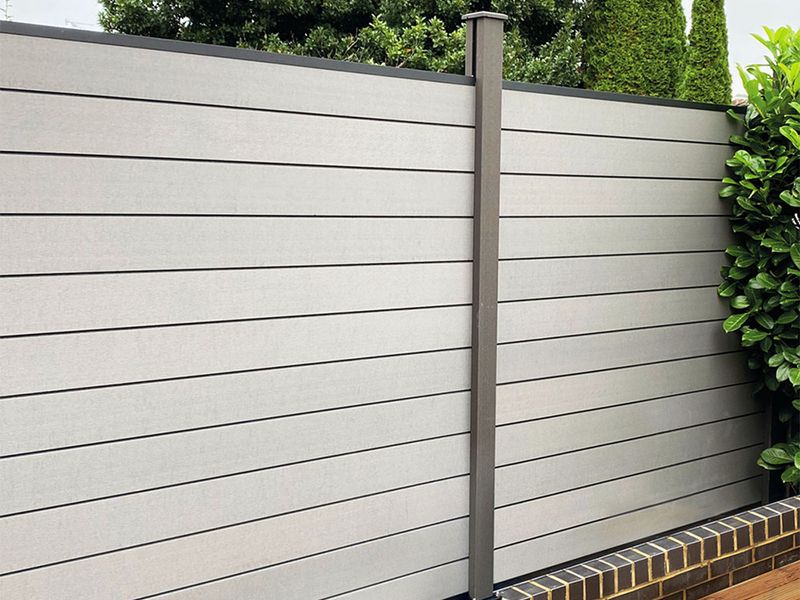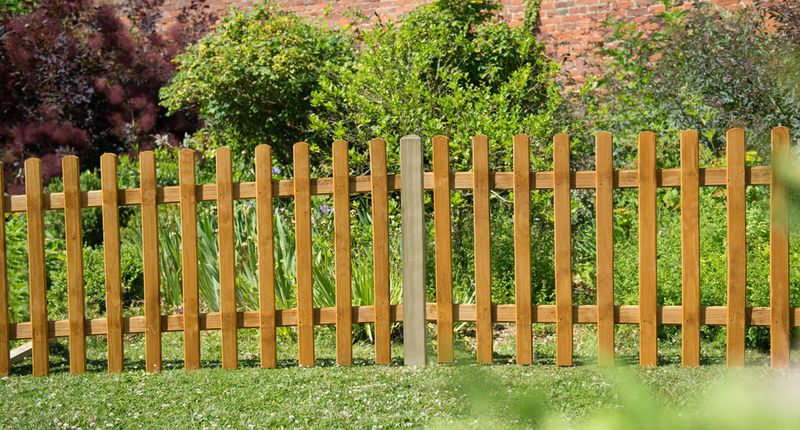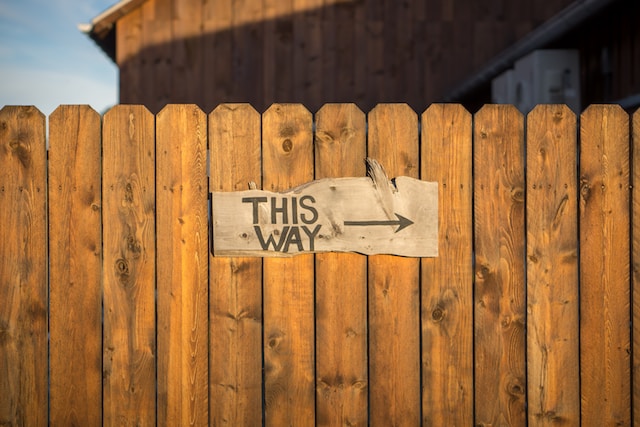Many homeowners don’t typically pay as much attention to their garden fences as they do to their fancier landscaping projects.
This is a huge mistake!
The thing is:
Garden fencing provides a clear boundary, defining the limits of your property and offering privacy. Fencing also enhances security by acting as a deterrent to intruders and keeping pets and children safe within the enclosed area.
But it can only do these things if you’ve got the right size.
With that in mind:
Let’s get to know the standard fence panel size and post size options in the UK!
Table of contents:
- What is the standard panel size?
- What size fence post do I need?
- How do you calculate the size of a fence?
- The bottom line
What is the standard panel size?
Let’s begin with the basics – the width of a fence panel.
In the UK, the standard width for a fence panel is 6ft/1.83m. So, estimating the total number of panels needed for your project is a fairly straightforward process. However, our exploration of the standard fence panel size isn’t complete just yet.
Now, here’s the breakdown:
Unlike fence width, fence heights come in several standardised options – 3ft/0.91m, 4ft/1.22m, 5ft/1.52m and 6ft/1.83m.
So, how do you choose the right height?

First and foremost, like other aspects of your property, fencing heights are governed by specific Building Regulations. The crucial consideration is where you plan to install your new fence. If you’re aiming for a front garden fence higher than 3.28ft/1m facing a public road or footpath, a planning permit is necessary. This is why many homeowners opt for the 3ft option – it minimises hassle and keeps the outdoor view unobstructed.
The same rule applies to side fencing adjacent to a public road – anything up to 1m is fine without a permit. However, exceeding this height requires a planning permit, and it could lead to neighbourly issues, which nobody wants.
With back garden fencing, you have more flexibility. No permit is needed for a fence up to 6.5ft/2m in height. This allows you to enhance the height and structural integrity of your 6×6 fence panels with options like a gravel board or a fence topper, both popular choices among engaged homeowners in the UK.
In general, 5ft and 6ft fences offer the most security and privacy for your back garden. However, the height you choose depends on your needs and budget.
To summarise, the standard fence panel size choices in the UK are as follows:
| Height | Width | |
| Choice 1 | 3ft/0.91m | 6ft/1.83m |
| Choice 2 | 4ft/1.22m | 6ft/1.83m |
| Choice 3 | 5ft/1.52m | 6ft/1.83m |
| Choice 4 | 6ft/1.83m | 6ft/1.83m |
Now that we know the size of the standard fence panel, let’s take a closer look at fence posts.
What size fence post do I need?
No fence is truly finished without the inclusion of fence posts, and a comprehensive garden fencing size guide must address this essential aspect. When it comes to whether you’ve chosen concrete or wooden posts, their height should align with the height of the selected fence panels. As a general guideline, the posts should extend approximately 2ft/0.6m above the panels.
For example, if you’ve selected 4ft panels, the posts should ideally measure 6ft. It’s crucial to factor in any additions like fence toppers or gravel boards when making these calculations.
Now, let’s delve into the depth requirement for fence posts.
By now, you may have deduced that posts need to be set 2 feet or 0.6m deep—precisely the amount by which the post exceeds the height of the fence. This principle, commonly referred to as ‘the 2ft rule,’ ensures not only a uniform overall height but also guarantees structural integrity through adequate fence post depth.
How do you calculate the size of a fence?

Now that you have a grasp of fence panel and post sizes, the next step is measuring your fencing area.
In this process, the height isn’t a significant factor, except for the consideration that taller panels tend to be more expensive. As long as you know the length of your garden or the specific area you’re fencing, you’re on the right track.
Here’s the breakdown:
Unless you’re opting for custom panels, a simple method is to divide the total length of the area by six. For instance, if it’s 42ft, you’d need seven panels. Adjustments may be necessary to round up the number since you can’t install a fraction of a panel. Keep in mind that each panel corresponds to one post, except for the last one, which requires two to complete the structure.
In our little scenario, you’ll need a total of eight posts. These posts typically add an extra 3″ for 3ft-4ft panels or 4″ for 5ft and 6ft panels, totalling an additional 24″ to 32″ to factor into your calculations. If ever in doubt, it’s always prudent to check with the manufacturer to verify all product measurements.
The bottom line

Investing in a new fence is a wise decision with long-term benefits, expected to endure for a minimum of around 15 years with proper maintenance. This strategic move significantly enhances your property, increasing its value and transforming your garden into a more enjoyable, private and secure space.
However, embarking on the journey of purchasing and installing a new fence can be a costly undertaking. That’s why it’s absolutely essential to not only select the right style but also the appropriate size of fencing for your garden. This proactive approach saves you from potential challenges and additional expenses during the fence installation and painting processes.
The positive aspect is that by keeping our standard fence panel size guide on hand, you’ll always be well-informed about the standard fence panel size and the suitable post dimensions. This will ensure a smooth and hassle-free experience, preventing any uncertainties or setbacks in the future.















